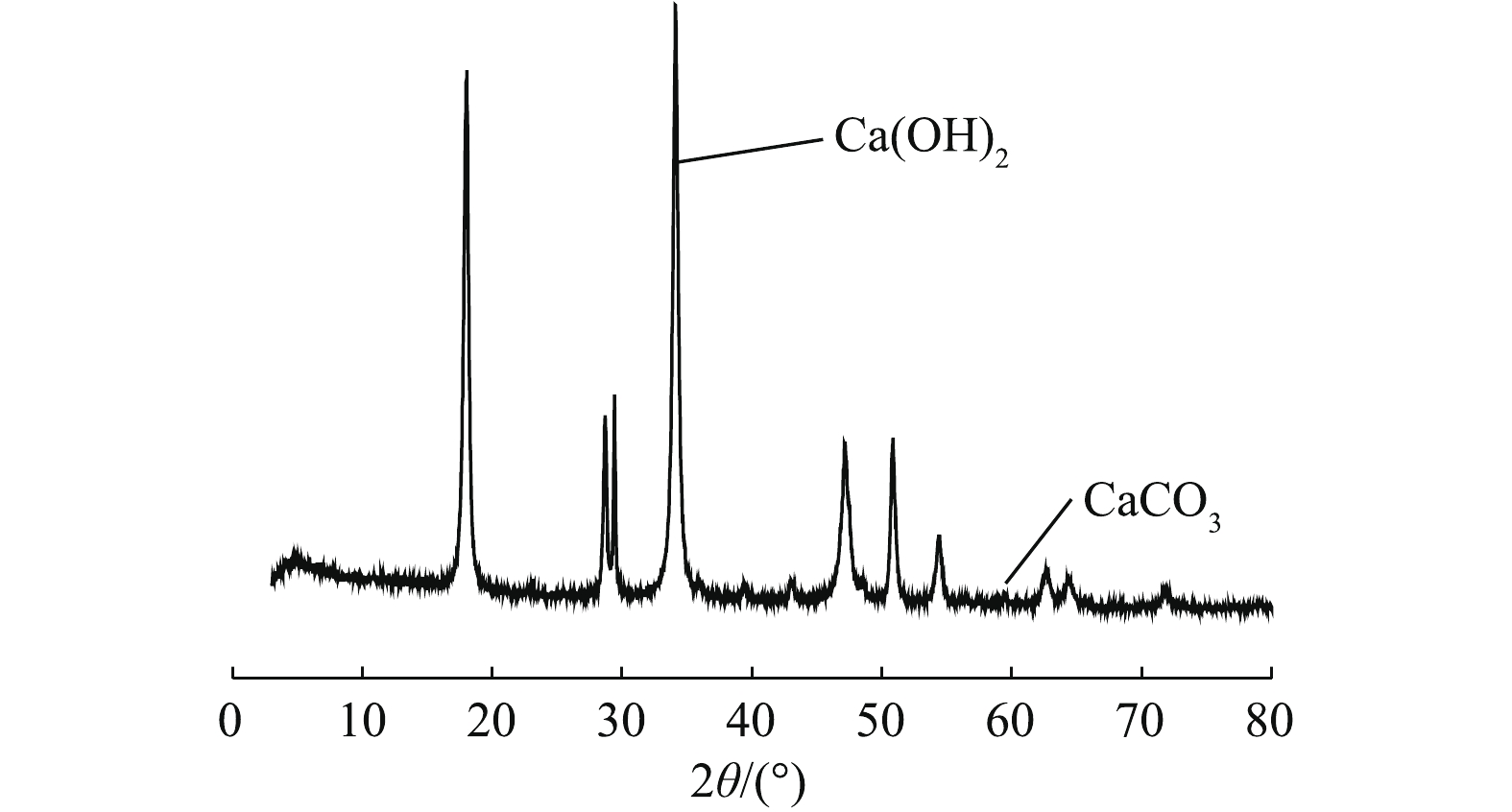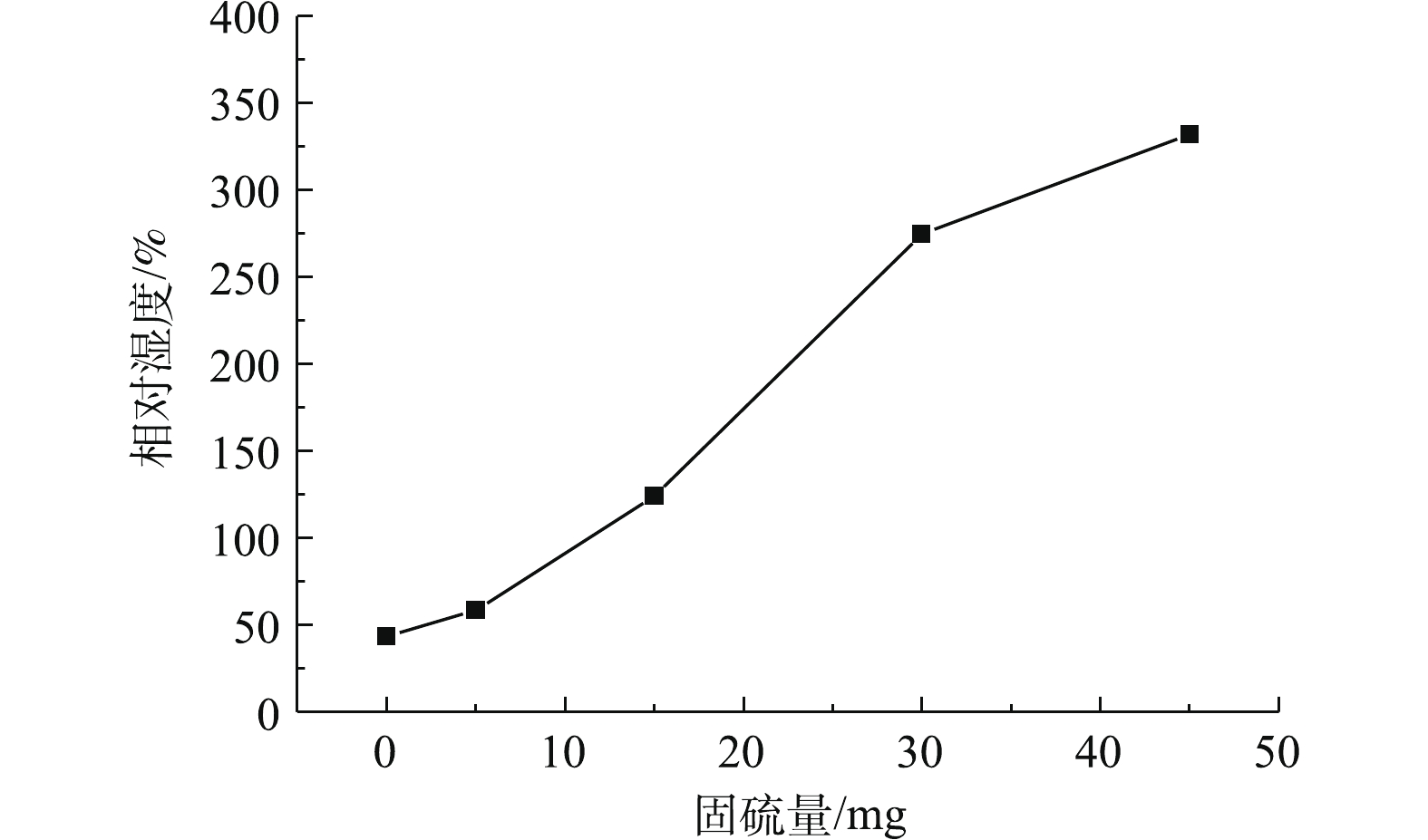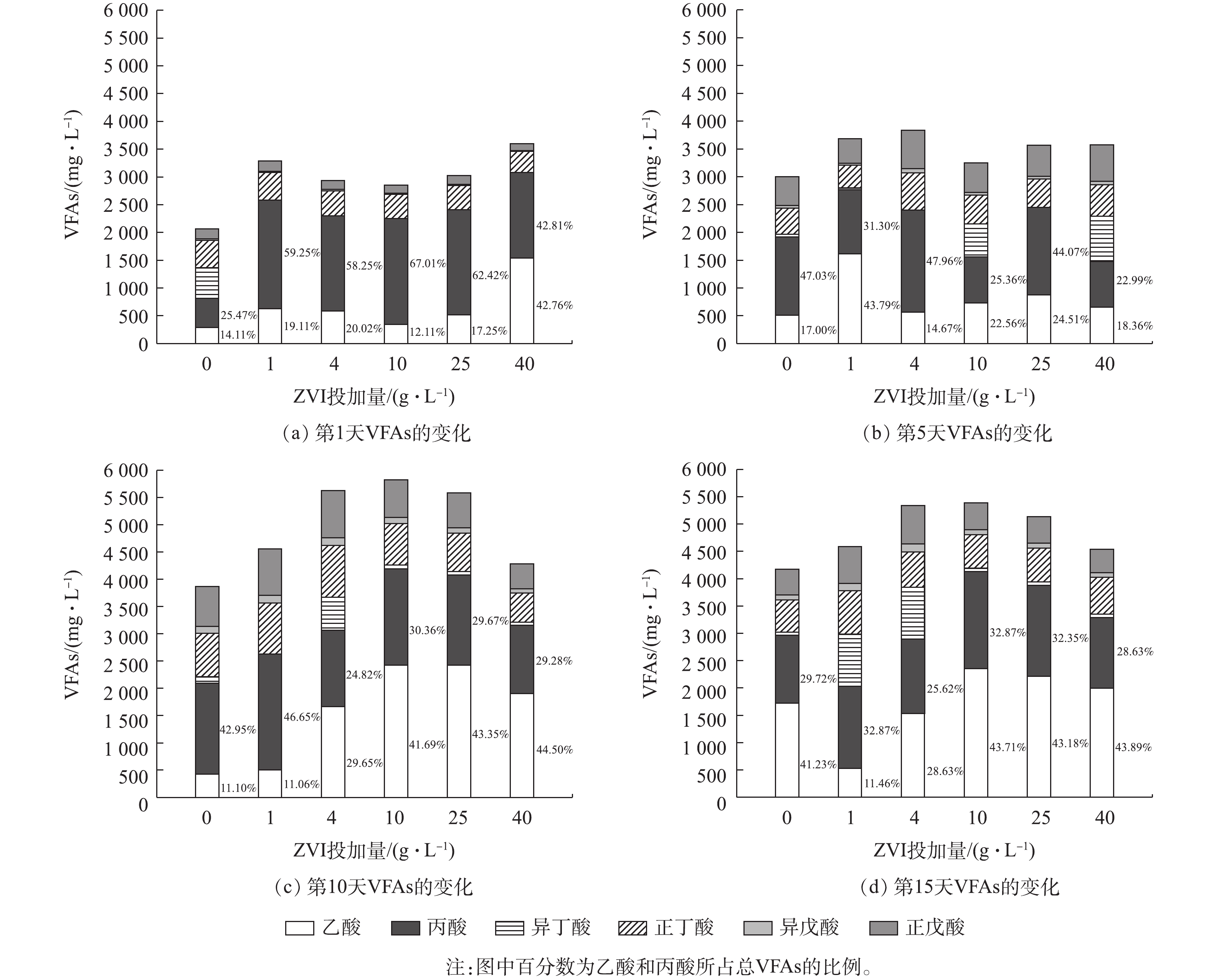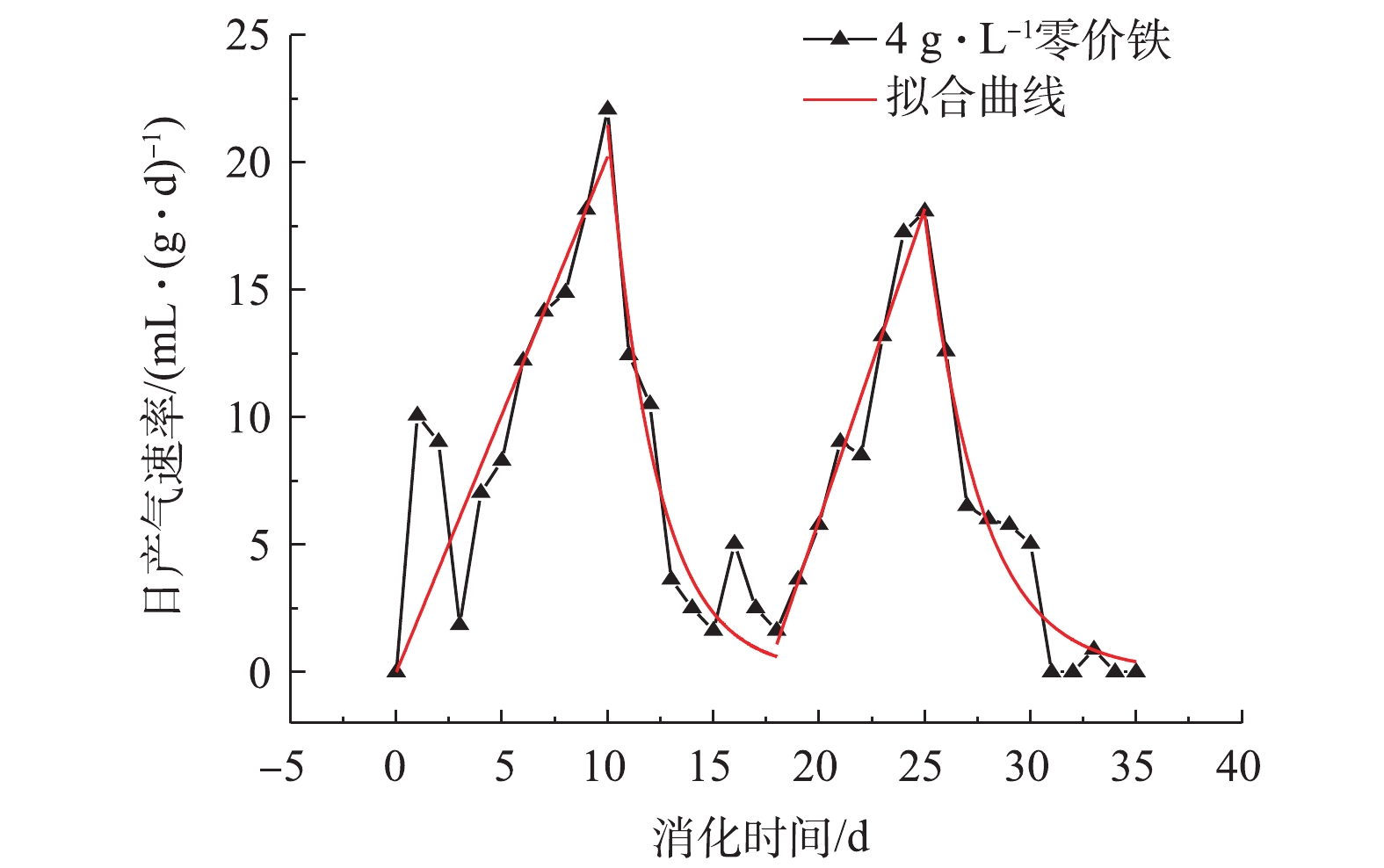-
厌氧消化是目前处理城市污泥最广泛有效的处置方式,国内外关于污泥厌氧消化协同处理技术大量涌现,主要集中在寻找合适的消化基质组合和投配比方面[1]。在选择消化基质方面,一般选择易降解、可生化性高的生物质垃圾,秸秆、餐厨垃圾、动物粪便、水果废弃物等[2-4]。而关于城市污泥与垃圾焚烧厂渗滤液协同消化的研究还鲜有报道。近年来,较多城市都面临着“垃圾围城”的困扰,垃圾焚烧是实现生活垃圾减量化的有效手段。随着土地资源日益紧张,垃圾焚烧厂的建设已进入加速期[5]。如何有效处理焚烧厂渗滤液是当前亟待解决的问题。此外,为了实现城市生活废物处理设施的综合化和集成化,我国开始将污水处理厂、垃圾焚烧厂等大型环卫设施集中建设[6]。该措施有利于促进这些处理单位开展协同处理及资源化利用工作。本研究采取城市污泥与焚烧厂渗滤液协同厌氧消化的方法,将有助于未来废物处理体系的综合性和集成性,提高运行效率,并降低处理成本和物流成本[6]。污水处理厂剩余污泥有机质、C/N相对较低,C/N一般为7,远低于厌氧消化微生物最佳C/N (20~30)[7];而初沉污泥C/N相对较高,可为剩余污泥补充一部分碳源。垃圾焚烧厂渗滤液由于垃圾储存周期较短,产生的废液为“新鲜”的垃圾渗滤液,COD、BOD及可生化性都高于垃圾填埋场渗滤液,故其有机质含量相对较高,还含有氯、钠、钾等盐类[8]。焚烧厂渗滤液和污泥在组成成分上具有较好的互补性,为二者的协同处理奠定了基础。零价铁在环境领域的应用一直备受关注,广泛应用于染料废水处理、重金属和硝酸盐去除、苯酚降解等领域[9-11];同时,在细菌污染水处理[12]、降解抗生素[13]和土壤修复[14]方面也表现优异。零价铁廉价易得、对环境友好,在厌氧消化方面,能为微生物提供必要的营养元素,其还原性能促进消化基质酸化水解[15],并为消化过程提供更佳的厌氧环境;而且,零价铁还能合成和激活产酸、产甲烷阶段的多种酶[16],实现甲烷增产的目的。
本研究分析零价铁对城市污泥和渗滤液协同消化产酸、产甲烷过程的影响以及有机物、消化液离子的变化情况,寻找效果最佳的零价铁投加量,为市政废物集中化高效协同处理提供参考。
全文HTML
-
初沉污泥、剩余污泥和接种污泥均来自重庆市鸡冠石污水处理厂;生活垃圾渗滤液取自于重庆市丰盛垃圾焚烧厂。实验原料理化特征如表1所示。
-
1)实验药品:溴乙基磺酸钠(EBS)、重铬酸钾(K2Cr2O7)、硫酸银(Ag2SO4)、氢氧化钠(NaOH)、抗坏血酸(C6H8O6)、钼酸铵((NH4)6Mo7O24·4H2O)、酒石酸钾钠(NaKC4H4O6·4H2O)、碘化汞(HgI2)、碘化钾(KI)、过硫酸钾(K2S2O8)、乙酸铵(CH3COONH4)、邻菲罗啉(1,10-phenanthroline),所用药品均为分析纯;零价铁粉末(100目)、浓硫酸(98%)、冰醋酸(98%)。
2)仪器设备:气相色谱仪(GC-2010PLUSAF 230V,Shimadzu Corporation)、气相色谱(福立9790II、浙江福立分析仪器有限公司)、离子色谱仪(ICS5000+,赛默飞世尔科技有限公司)、COD快速消解仪(6B-12型,江苏盛奥华环保科技有限公司)、紫外可见分光光度计(T6新世纪,北京普析通用仪器有限责任公司)、马弗炉(XH5L-16,郑州鑫涵仪器设备有限公司)、恒温恒湿箱(HWS型,宁波江南仪器厂)。
-
根据重庆市鸡冠石污水处理厂运行情况以及丰盛垃圾焚烧厂渗滤液产生量的现实情况,确定厌氧消化底物水平为:初沉污泥与剩余污泥体积比为4∶1(初沉污泥272 mL,剩余污泥68 mL),渗滤液添加量为15%(60 mL),接种污泥50 mL,共450 mL。该水平底物C/N比为22.93,能够满足厌氧消化微生物所需C/N。后续实验将在此配比的底物基础上添加不同浓度的零价铁进行研究。
为了考察不同浓度零价铁对污泥和焚烧厂渗滤液协同厌氧消化在产甲烷和产酸阶段的影响,设计2批厌氧消化实验:一是在6组血清瓶中加入一定配比的消化底物后,再分别投加0、1、4、10、25、40 g·L−1的零价铁,充1 min氮气除去氧气后,连接排水(饱和碳酸氢钠)装置收集气体,消化时间为35 d;二是在相同的底物基础上投加甲烷菌抑制剂溴乙基磺酸钠,浓度达到50 mmol·L−1,以抑制产甲烷阶段,控制厌氧消化在产酸阶段,再分别投加6组不同浓度的零价铁,同样氮封后进行厌氧消化,观测消化过程前期15 d的酸化过程。2批实验运行条件相同,均采用500 mL血清瓶,反应装置置于恒温箱中,设定消化温度为中温35 ℃,所有实验设3组平行实验。
-
污泥VSS以及含水率采用重量法[17]测定;化学需氧量(COD)采用快速消解分光光度法[18]测定;氨氮通过纳氏试剂分光光度法[19]测定;气体组分(CH4、CO2)采用福立9790II气相色谱仪监测;挥发性脂肪酸(volatile fatty acids,VFAs)采用气相色谱(Agilent GC-2010PLUSAF 230V)测定。测定消化液上清液各离子浓度时,消化液4 000 r·min−1转速下离心10 min后,取2 mL上清液进行测定。硫酸根通过ICS-5000+离子色谱测定;正磷酸盐通过钼酸铵分光光度法[20]测定;亚铁离子通过邻菲罗啉分光光度法[21]测定。
厌氧消化中产气速率用一阶动力学Scholl Canyon模型拟合得到,计算方法如式(1)所示。
式中:Q为产气速率,mL·d−1;R为反应器消化基质量,mL;k为产气速率常数,d−1;L0为潜在产气总量,mL·g−1(以VSS计);t为消化时间,d。
1.1. 实验原料
1.2. 实验药品及仪器设备
1.3. 实验方法
1.4. 分析方法
-
在厌氧消化中产生的挥发性短链脂肪酸中,由于产甲烷菌只能直接利用甲酸、乙酸、甲醇等小分子有机物,加之丙酸比丁酸更难转化为乙酸,因此,促进乙酸产生以及控制丙酸的产生和积累具有重要现实意义。
在添加EBS抑制剂后,产甲烷过程受到了明显的抑制。消化前混合基质挥发性脂肪酸总量(TVFAs)初始值为869.52 mg·L−1。如图1所示,投加零价铁后,各组积累的TVFAs随时间持续上升。在第10天,10 g·L−1组TVFAs达到最大值5 822.30 mg·L−1,提升了569.60%,各组在第10天后TVFAs增速缓慢。各实验组TVFAs均大于未投加零价铁的对照组,可见,零价铁的投加加速了TVFAs的产生。如图1(a)所示:各实验组在第1天后,乙酸、丙酸大幅提升,相比对照组,丙酸最高提升了270.9%;在最高零价铁投加量40 g·L−1下,第1天的乙酸产量达1 539.81 mg·L−1,相比对照组提升了425.51%。随着消化时间的增加,丁酸、戊酸浓度持续增加。乙酸/TVFAs随时间呈上升趋势,由图1(d)可知:在第15天时,10 g·L−1组乙酸/TVFAs相比第1天增幅最大,为31.6%;当零价铁投加量大于25 g·L−1时,乙酸/TVFAs最大增幅不明显,仅为1.74%。这说明高零价铁投加量在产酸初期(<5 d)对乙酸影响较大。从丙酸的累积量来看,对照组丙酸从第15天开始下降,而各实验组丙酸在第5天时则下降。这说明零价铁能有效促使丙酸提前开始分解转化。同时,丙酸/TVFAs呈现先增加后降低的趋势,与第1天相比,第5天中10 g·L−1组的丙酸转化率达到最高,为41.65%,结果见图1(b)。孟旭升[22]也提出,零价铁的添加会进一步促进丙酸转化为乙酸的过程,并使得丙酸分解的吉布斯自由能降低,更易分解,从而减少了丙酸积累。
从微生物角度分析,在厌氧系统中,氢营养型产甲烷菌和同型产乙酸菌共同竞争氢气,由于产甲烷菌对氢气的亲和力是同型产乙酸菌的10~100倍[23],故产甲烷菌竞争氢气能力更强。添加抑制剂的实验组中,产甲烷菌在EBS特异性抑制剂作用下,氢气优先被同型产乙酸菌利用,加之铁粉腐蚀析氢,加快促进乙酸的产生,见式(2)和式(3)。SIRIWONGRUNGSON等[24]在抑制甲烷化条件下厌氧降解丁酸时,也发现氢气与CO2直接反应生成乙酸,替代了产甲烷过程,从而积累了乙酸的产量,反应见式(3)。此外,李小兰等[15]研究发现,当VFAs积累,抑制有机物的水解和酸化时,针铁矿的投加能为微生物提供微量元素Fe2+,并能加速电子传递,从而促进VFAs向甲烷的转化。
-
甲烷产量是评价厌氧消化体系运行效果的指标。如图2(a)所示,从累计产甲烷量来看,产气初期,各曲线前10 d产气趋势相似,零价铁作用不明显;随后,曲线在第10天附近出现拐点,对应图2(b)中日产气速率在第10天附近出现第1个高峰,整个体系均先降解混合基质中易降解的组分。较高零价铁投加量能使产气高峰提前出现,在图2(b)中,40 g·L−1零价铁组最先出现产气高峰。15 d后,高投加量组(25、40 g·L−1)日产气量趋于0,对应累计产甲烷量开始趋于平缓。过多的零价铁极易在体系内聚集沉淀,导致污泥分布不均,减弱产气效率。在图2(a)中,1、4、10 g·L−1组累计产甲烷量在第25天附近出现第2个拐点,产气速率加快,对应图2(b)日产气量出现第2个产气小高峰,而对照组在25 d后产气量趋近为0。这说明,零价铁进一步促进了系统中难降解有机物的分解转化,继而增加甲烷产量。零价铁投加量为4 g·L−1时,累计产甲烷量最高,达到189.65 mL·g−1(以VSS计),相比对照组提升了30.1%。零价铁促进城市污泥和垃圾焚烧厂渗滤液混合基质的甲烷产量,促进产生更多的乙酸,为甲烷菌提供更充分的底物条件,并且能进一步降解有机物,实现甲烷增产。
为更进一步了解厌氧消化产气速率及其潜在产甲烷能力,以零价铁投加量4 g·L−1实验组数据为例,对其日产气速率进行模型拟合,得到日产气速率与时间关系的定量数学表达式。曲线在产气初期产气速率快速增长,采用一次函数拟合,到达高峰后产气速率随着消化基质有机组分的减少而递减,使用一阶动力学Scholl Canyon模型对其进行拟合,拟合结果如图3所示,相关参数见表2。由图3可知,在最佳零价铁投加量4 g·L−1下,各部分曲线拟合相关系数均在0.93及以上,其产气速率满足一次函数和Scholl Canyon模型指数衰减规律,实测值与拟合曲线基本相符。在两段产气衰减过程中,第2段产气速率k为0.38,略低于第1段的0.44,产气速率减缓,说明对于难降解有机物的降解速率减缓;同时,第1段潜在产气总量L0为307.00 mL·g−1,大于第2段的182.23 mL·g−1,即甲烷产量主要来自第1段过程。其可能的原因在于,在消化基质中,产气初期易降解部分较多,利于微生物繁殖迅速,潜在产气量大,随着有机质的消耗,潜在产气量也大大降低。
-
如图4(a)所示,消化35 d后,COD整体浓度下降。随着零价铁浓度的增加,COD降解率呈下降趋势,各组COD降解率依次为56.65%、49.37%、54.05%、47.16%、41.17%、26.08%。零价铁的还原性消耗了厌氧系统中的一些氧化剂;此外,零价铁提供电子还可能还原污泥中的一些难降解有机物[25-26]。
挥发性悬浮物(VSS)的减少量通常用来评价污泥厌氧消化效果。如图4(b)所示,消化35 d后,各组VSS浓度均得到大幅降低,从起始值30.1 g·L−1分别降低到了11.27、10.01、9.71、9.65、9.29、8.99 g·L−1,最高降解率达到70.18%,与空白对照相比提升7.56%。这与冯应鸿[27]在探究铁屑对剩余污泥减量化时,发现VSS降解率是随着铁屑浓度增加呈现上升然后又下降的实验结果有所不同。此外,零价铁腐蚀析氢,但H2同时又被快速消耗,促进了CO2和H2的自养产甲烷过程和同型产乙酸过程,使得VSS向CO2和CH4方向转化,直接增加CH4产量,还提高了VSS降解率[28]。在本研究中,甲烷产量和VSS降解率结果表现与之一致。LIU等[29]在实验中也发现,外源加入H2会将内源CO2还原为CH4,CH4增产效果明显,还提高了10%的VSS降解率。
在厌氧消化过程中,氨氮是微生物重要的氮源,可以增加碳酸氢盐的缓冲能力并提高pH,但其浓度过高会抑制甲烷菌的活性,导致消化系统失稳。消化前,消化基质氨氮浓度为490 mg·L−1左右,厌氧消化35 d后,各组消化液氨氮浓度均有所升高,但各实验组氨氮浓度均略低于对照组(见表3)。这是因为,在缺氧条件下,含氮物质在生物作用下往往转变为氨氮,导致氨氮浓度升高[30];而且,零价铁能略微降低氨氮浓度,但不同投加量对氨氮降低影响差异不大。KJELDSEN等[31]在较长的厌氧消化过程中发现,氨氮的浓度并没有降低,同时,氨氮也是渗滤液的一种长期污染物,与渗滤液中大多数外源性有机化合物相比,氨氮在长远看来,将是值得关注的问题。
-
1)硫酸根离子的变化。消化前,消化基质
SO2−4 平均浓度为523.93 mg·L−1;消化后,消化液上清液SO2−4 浓度大幅降低,随着零价铁浓度的增加,SO2−4 浓度持续下降(见表3)。零价铁增加到25 g·L−1时,SO2−4 下降效果不明显。Fe作为电子供体,为硫酸盐还原菌(SRB)的生命过程提供电子,减少了SRB与产甲烷菌(MPB)对共同底物有机酸和氢气的竞争,从而增加MPB的数量,利于甲烷增产[32]。此外,SRB在还原过程中产生的H2S气体会抑制MPB的活性,导致整个厌氧消化系统效率低下[33];而零价铁的加入,有助于让SO2−4 转化为S2-,S2-与Fe沉淀成为FeS,减轻了S2-对产乙酸菌和MPB的抑制现象,反应见式(4)和式(5)。Fe与H2S的结合也会减轻对MPB的毒害抑制作用[34]。在零价铁浓度为4 g·L−1时,SO2−4 去除率达到96.7%,相比空白对照组,提升了6.1%。这说明零价铁的投加有利于硫酸根离子的去除。4 g·L−1组SO2−4 浓度十分接近25 g·L−1和40 g·L−1高投加量组。这说明4 g·L−1是较为经济的投加量。LIU等[35]建立的数学消化模型也印证了以上结果。2)正磷酸盐的变化。消化前,各组消化基质
PO3−4 平均浓度约为21.07 mg·L−1。如表3所示,消化后,PO3−4 浓度随着零价铁投加量的增加而降低。在4 g·L−1时,PO3−4 去除率达到90.6%,相比空白对照组,提升了7.7%。有研究[36]发现,磷酸盐在污泥厌氧消化过程中,先在前3 d快速释放,然后呈下降趋势,在高浓度零价铁下,正磷酸盐浓度变化更明显。零价铁在水中腐蚀产生的Fe2+/Fe3+(厌氧状态下主要是Fe2+)沉淀可除磷(式(6))。同时,Fe(OH)2与磷酸根能产生共沉淀作用,均可降低磷酸盐的浓度。此外,零价铁本身有吸附PO3−4 的作用[37],且这种直接吸附起主导作用,所以PO3−4 也是主要富集在铁粉的表面[28]。3)亚铁离子的变化。作为微生物生长所必须的微量元素,Fe构成微生物细胞的重要成分[38]。消化前,消化基质Fe2+浓度约为130 mg·L−1;消化后,如表3所示,消化液中Fe2+随零价铁投加量增加而增加,但均低于厌氧消化前Fe2+的浓度。这说明溶解态的铁元素被微生物摄取利用。有研究[36]指出,Fe2+更多地存在于污泥中,这与Fe2+与
PO3−4 、S2-结合沉淀存在于污泥絮体中有关。此外,PUYOL等[39]的研究表明,Fe2+会与CO2反应生成不溶性的菱铁矿,反应见式(7)。这也是上清液中Fe2+浓度大幅减少的重要原因。Fe2+的混凝沉淀作用也可佐证于零价铁对VSS降解率有一定的提高作用,但也因此削弱了零价铁强化厌氧消化的作用。
2.1. 零价铁对协同厌氧消化酸化的影响
2.2. 零价铁对协同厌氧消化产甲烷的影响
2.3. 零价铁对协同厌氧消化中有机物和氨氮的影响
2.4. 离子浓度变化对厌氧消化系统的影响
-
1)对于污水处理厂初沉污泥、剩余污泥和垃圾焚烧厂渗滤液的协同厌氧消化,零价铁确有促进甲烷增产的作用。零价铁适宜投加量为4 g· L−1,其产气速率符合一次函数和Scholl Canyon模型指数衰减规律。零价铁投加量大于25 g·L−1时,产气高峰提前出现,但产气时间过短。
2)在EBS抑制剂存在的条件下,观察到零价铁在酸化阶段的主要作用是增加TVFAs产量、促进丙酸提前分解。10 g·L−1零价铁组中丙酸转化率最高,乙酸/TVFAs增幅最大。
3)通过厌氧消化前后各指标对比,零价铁对VSS降解率有促进作用,而COD降解率均有所下降;零价铁能略微降低氨氮浓度,但不同投加量对氨氮浓度的降低影响不大。
4)投加零价铁后,发现消化液上清液硫酸根浓度减少,进一步验证了零价铁对甲烷产量的促进效果。磷酸根、硫酸根与亚铁离子的混凝沉淀作用以及零价铁本身的吸附作用,提升了VSS降解率,但也削弱了零价铁对厌氧消化的强化作用。




 下载:
下载:












